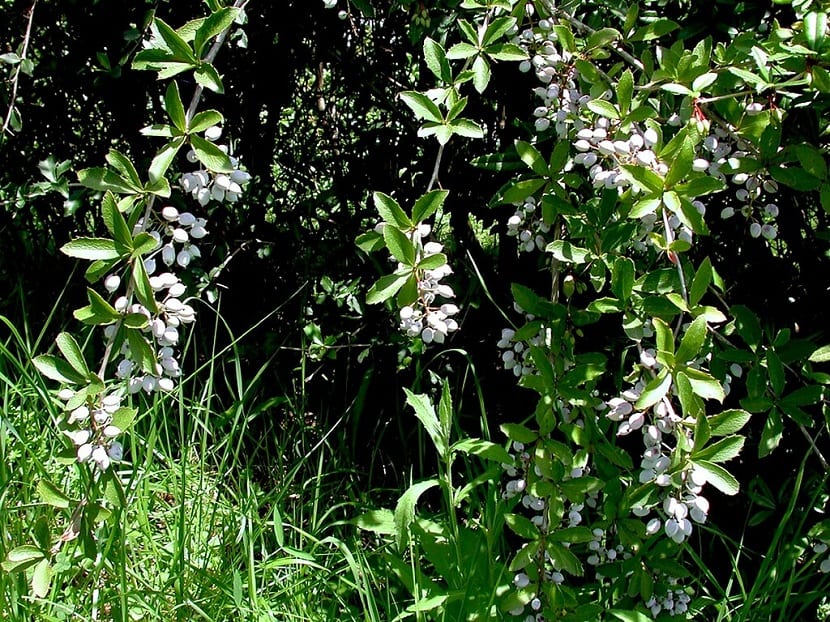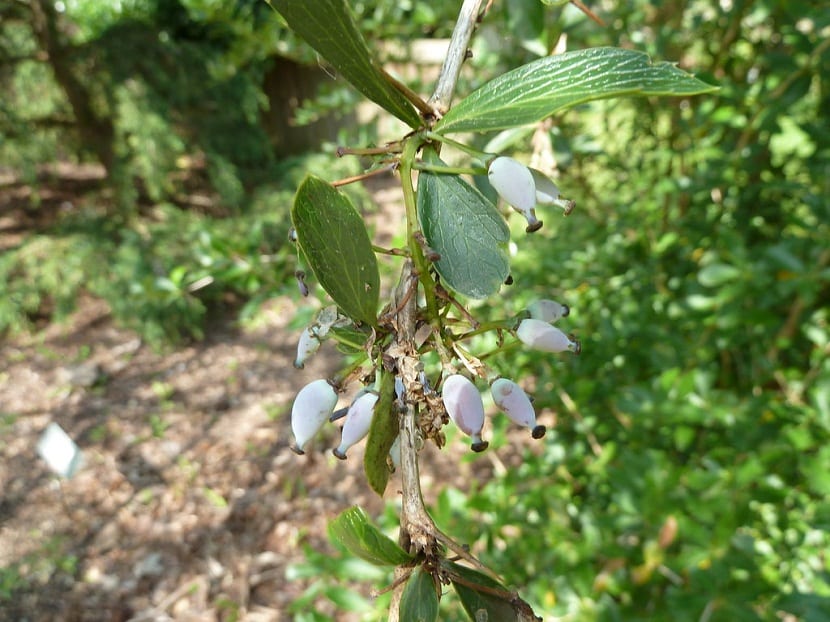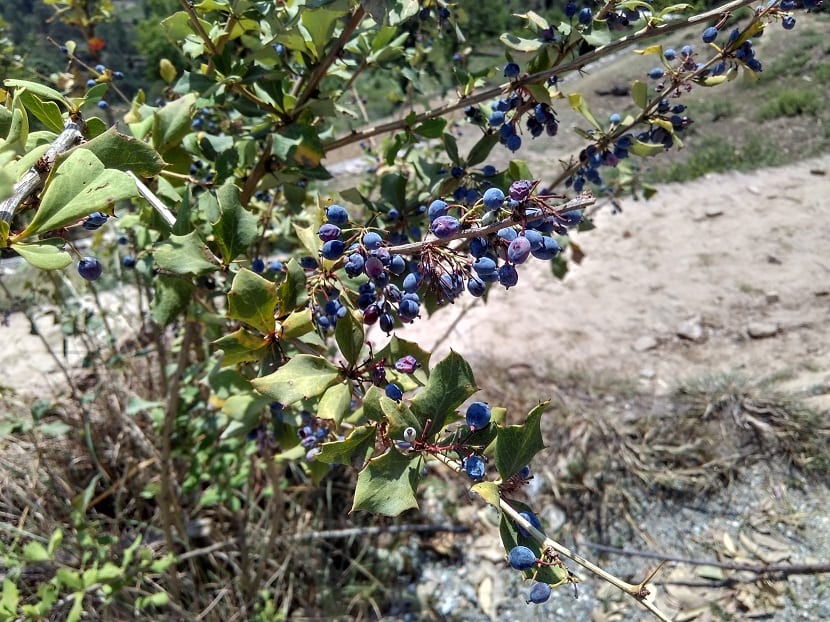
Berberis aristata it is a plant of the family berberidaceae and commonly known as Citra, this being an important herb with medicinal properties native to the northern Himalayan region. It is a critically endangered species of the Indian Himalayas due to its extensive collection of roots to extract its berberine alkaloid.
This prickly herb is native to the mountains of northern India and Nepal. These shrubs are wildly distributed throughout the Himalayas, they can also be seen in southern India in the Nilgiri Hills and also in the island Republic of Sri Lanka.
Characteristics Erberis aristata

El Berberis aristata is a deciduous evergreen plant that can exceed 4 meters in height and it has a stem of approximately 20 centimeters in diameter. Its branches can be whitish or yellowish in color; they are cylindrical, erect, smooth and furrowed.
It has ovoid, whole and spiny leaves, narrow at the base, with accentuated nerves, of a glossy dark green color on the upper surface and pale on the underside. It has numerous flowersIts inflorescence appears as a simple, somewhat droopy raceme; tiny, linear and lanceolate bracts.
Its fruit consists of a small, ovoid, bluish berry and presents a whitish-looking flowering, persevering style and stigma. Its root system is thick. The bark inside is pale brown, rough to the touch and narrow, while the outside has a yellow, rough and fibrous tone.
Farming
It is a very vigorous plant, capable of withstanding the intense winters of temperatures down to -15 ° C without receiving any damage. It is a kind suitable for hot and humid clay soils, but it can still adapt to other types of thin, dry and shallow soils. As for the pH, it is suitable for almost all.
It is an easy plant to prune, it can be done in a rigorous way so that it sprouts from the base. Easily hybridizes with other species of the same genus. About its needs on sunlight, you can put it equally under direct exposure or in semi-shade.
Propagation
For a better propagation, you must sow the seed as soon as it matures in a cold environment, in ideal conditions germinates in late winter or early spring. If you let the seed overripe it will take a little longer to germinate. If you store the seed, it may need cold stratification and you will need to grow it in a cold environment as soon as possible at the beginning of the year.
When you're sure the seedlings are grown enough to handle, place them in individual pots in a greenhouse or cold frame for at least the first winter. When they have reached approximately 20 centimeters in height, grow it in a permanent place in late spring or early summer. Try not to water too much and keep them in a ventilated place.
Uses
It is a plant to which numerous medicinal properties are attributed. It is widely used in Ayurvedic medicine (traditional indian medicine) since ancient times. There are those who believe that its properties are similar to that of turmeric. Its extract is used in the treatment of dermatological complaints, menorrhagia, diarrhea, jaundice and certain ophthalmological conditions.

A cooking prepared with the bark of its root is used to treat ulcers, improve their appearance and promote better healing of them. An extract of this plant is used in the formula of a cream called dermocept, for lesions caused by sarcoptic mange. The Berberis aristata also has properties for an upset stomach; it also serves as an astringent and antipyretic. Another of its uses attributed to this miraculous plant is to control glucose levels in the bloodstream and sweating. Its berries combined with other ingredients of plant origin have hypocholesterolemic effects in rabbits.
Diseases and pests
It is important to maintain the necessary care to avoid diseases caused by various pests. However, it is a fairly resistant plant and is that like others berberis of his kind, can host black rust fungus on its stem. Rust is a condition that affects your crops and can dangerously spread to plants.